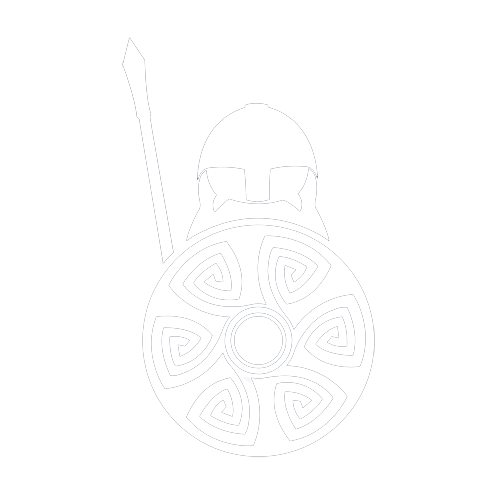York Castle in the Old Viking Capital
York Castle sits strategically between the rivers Ouse and Foss in York, the old Viking capital of the Danelaw. With an established Norman Motte and Bailey design, originally of earthworks and timber, York Castle has seen plenty of action, including the famous Harrying of the North.
William I built the castle in the summer of 1068, to subdue the northern rebellions revolting against his invasion. Since then, the castle has been upgraded with stone (around 1204), and the current Clifford's Tower sits upon the original Motte. York was originally a Roman town, which became known as Eoferwic as Anglo-Saxon mercenaries settled in the 5th Century. In 866, the Danes invaded, travelling up the Humber to the river Ouse. When they arrived in York, they sacked the city and named it Jorvik.
York Castle and the Normans
In late 1068, William the Conqueror had finished building York Castle, and left a small garrison of men to guard it. His previous Anglo-Saxon Earls had either defected or been killed by rebels. So the Norman, Robert de Comines, was made Earl of Northumbria and put in charge of the castle. William returned south to build more castles, including the double-motte castle at Lincoln.
In January 1069, the new Earl of Northumbria travelled north to Durham, to confront another rebellion. On his way, bishop Ethelwin warned the Earl that an enemy army were lying in wait. The Earl ignored this advice, and upon his arrival in Durham, he along with 700 of his men were killed.
The Anglo-Saxon-Scandinavian rebels under the leadership of Edgar Ætheling, then advanced south to York. Edgar, who had a valid claim to the throne of England, attacked York Castle and the city. In response, William swiftly returned to York, surprising the siege. Edgar managed to flee to Scotland, and his rebellion was crushed.
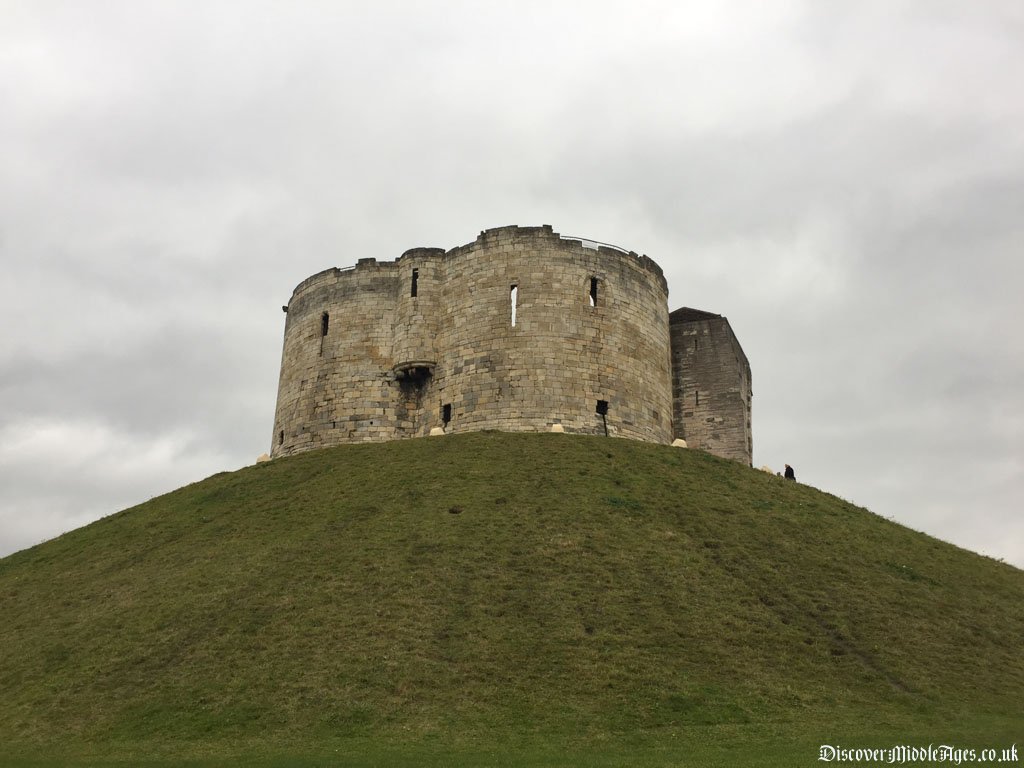
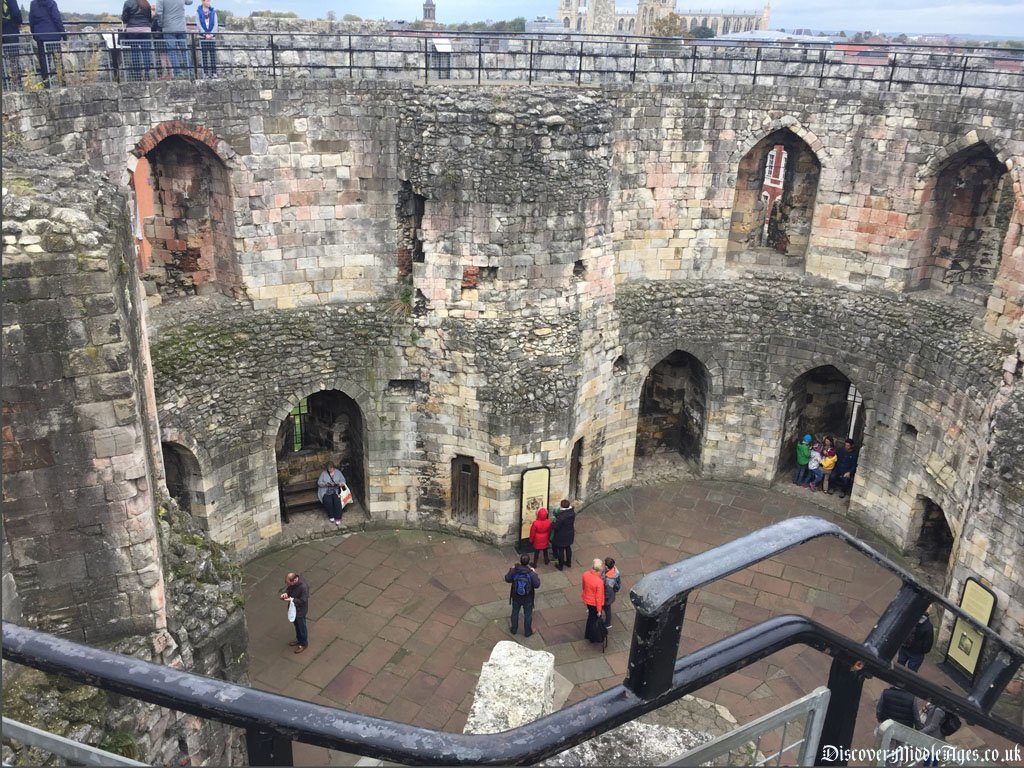
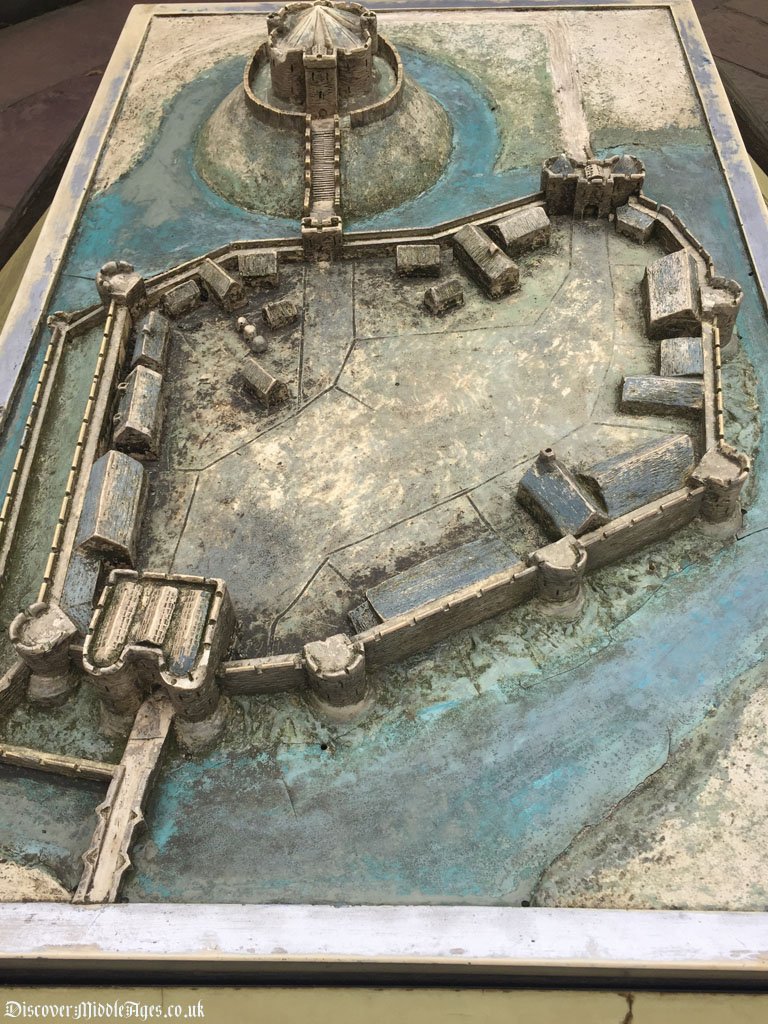
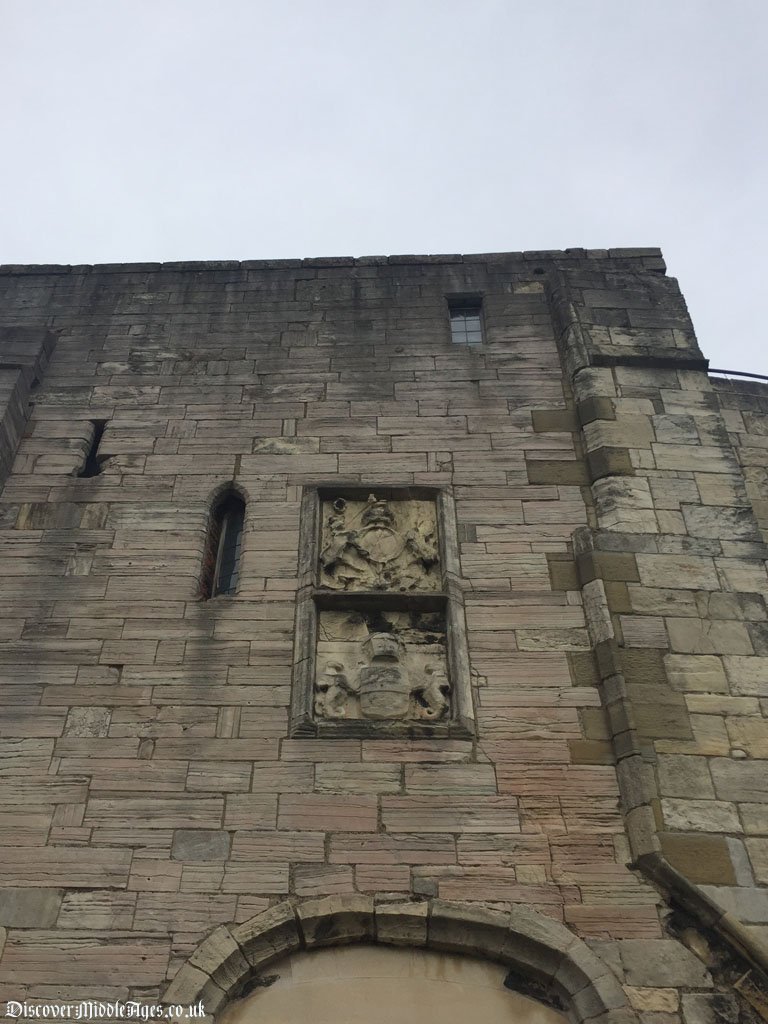
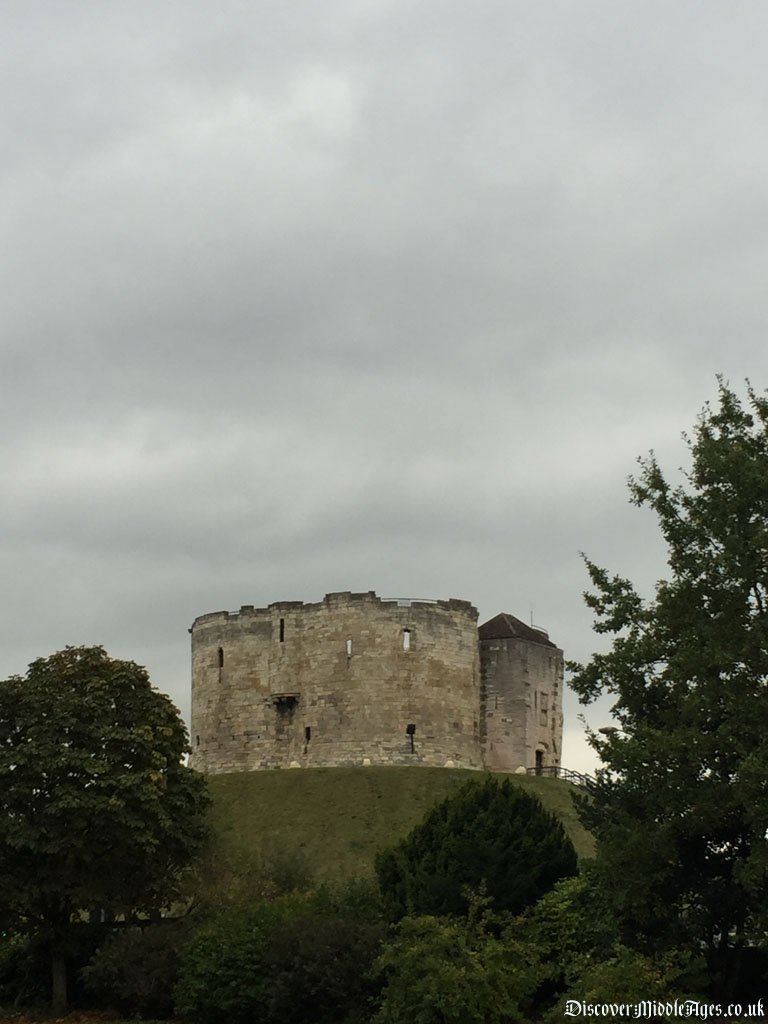
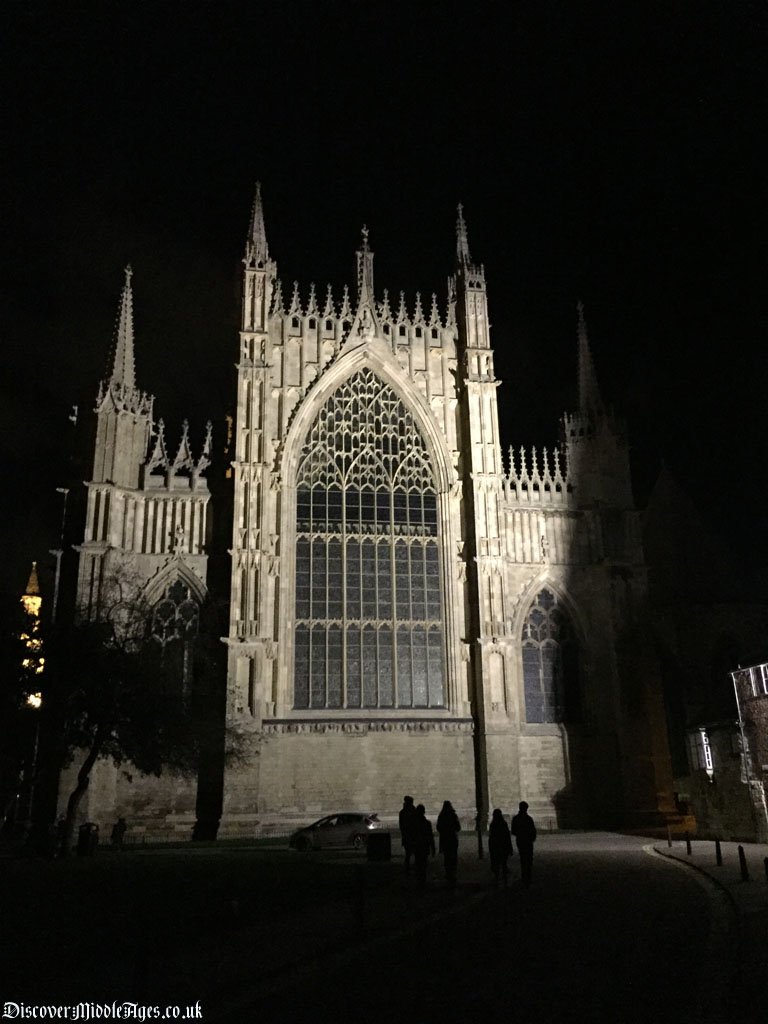
The Old Baile Hill Castle
While William was present in York, he decided to build a second castle on the Western bank of the river Ouse. It was another Motte and Bailey castle, slightly smaller than the first one, and was completed in 1069.
The castle is no longer present today, however at the junction of Bishopgate Street and Skeldergate, looking north-west, there is a mound. It has part of the city wall on top of it, terminating in a small entrance tower. This is the motte (mound) on which Old Baile Hill Castle once stood.
The two castles either side of the river Ouse, could control any boats travelling north up the river from the Humber. A notorious path used by the Vikings, to travel as far in land as they could, and attack unsuspecting towns. It was this path that a large Viking fleet used, after their assault on many eastern ports in the autumn of 1069.
Arriving in York, the Danes joined forces with Northumbrian rebels, and attacked York Castle in 1070. The garrison in the castle chose to burn their own houses, to prevent the timber being used for bridges. York city was also set ablaze, and finally the two castles of York were destroyed by the invaders.
Harrying of the North
At this point, William had lost patience and attacked the rebel's source. The Harrying of the North began. William and his troops set about destroying all crops and settlements, forcing the rebels into hiding. Food stores and livestock were not spared, and straggling civilians were slaughtered. Those that could, fled south as far as Worcester.
The winter of 1070 was a desperate time of starvation, and many perished. The Danes retreated back down to the Humber to safety. By 1072, York Castle was rebuilt, with both Mottes re-established either side of the river Ouse.
York Castle Massacre
York Castle has a dark secret. In 1190, during the reign of King Richard I, two Jewish moneylenders of York attended the kings coronation in London. During the ceremony, anti-Semitic riots erupted which spread to other cities. The Crusades had caused mistrust and resentment towards Muslims and Jews. With misinterpreted commands by the king, some Jews were killed, including one of the York moneylenders Benedict.
Back in York, locals began attacking Jewish houses, and any occupants they found. Panicking, the Jews sought refuge in York Castle, where the constable of the castle gave them sanctuary. Any Jews found outside the castle were either killed or baptised under force.
The constable of the castle was called away to attend other matters, and upon his return the Jews refused to let him in, fearing betrayal. After seeking help, the constable was joined by troops and a large angry mob. The trapped Jews attempted to fend off the attack by throwing stones from the castle's interior, down onto the crowds. However, they soon realised they would never get out alive.
On the eve of the Jewish Sabbath, 16th March 1190, a rabbi urged the 150 trapped Jews to commit suicide. The fathers were to kill each member of their families, and then kill themselves. Anyone remaining would burn the belongings and the castle. Those that did not commit suicide, where killed leaving the castle the next day. Despite a promise of protection from Richard Malebisse, a leader of the mob.
Within York Minster, any paperwork which recorded local debts were destroyed by the mob, thus wiping their debts.
York Castle and Clifford's Tower
York Castle was regularly upgraded in parts with stone, during the reign on King John (1199-1216). But it was his son, Henry III, who transformed the timber and part-stone castle, east of the river, in 1245. A complete reconstruction was surveyed by the master carpenter, Simon of Northampton, and the master stone mason, Henry de Reyns. By 1246, the building began with an annual budget of up to £267 (£142,000 today).
Four years later, towers on the inner bailey wall were completed, and in 1251 work began on Clifford's Tower on the motte (known as King's Tower at the time). The work continued until around completion, around 1262, costing £3,700 (around £2,000,000 today).
Illustration by Peter Urmston of Historic England
Clifford's Tower was named after the Clifford family, and Henry Clifford's arms are present on the tower's fore building. Henry was the 5th Earl of Cumberland, and governor of York until 1643. Some suggest the tower is actually named after Roger de Clifford, who was executed and hung over the side of the tower in 1322.
The tower consists of four semi-circular lobes that join together. Inside which, there was once a square tower which has now gone. A number of floors would have made up the interior, with rooms used for both storage and accommodation.
In 1298, the exchequer was located in the castle, and Clifford's Tower safely stored the war money and taxes. With the treasury and royal courts moving a number of times from London to York, the castle became a highly significant stronghold for the king. Especially as tensions with Scotland were never far away.
Flooding
In 1315, the rivers Ouse and Foss flanking York Castle flooded their banks. The flood was so severe, that part of the curtain wall collapsed, and the motte upon which Clifford's Tower stands, started to soften. Emergency repairs were made, however by 1360, the tower was showing signs of decline. The banks of the river Foss were eventually strengthened, to prevent further flooding. Today you can see the east lobe leaning away from the tower, caused by the softened motte.
Clifford's Tower in the Civil War
In the 17th Century, Clifford's Tower was passed through a number of owners, who did very little with it. When the civil war broke out, the castle was finally repaired for the arrival of Queen Henrietta Maria, wife of Charles I, in 1643. The Queen, who had been raising money and arms in Holland, took refuge to avoid Parliamentarian forces. Cannons were mounted on top of the tower, and the moat was dug deeper with a drawbridge added. The Queen left a few months later for Oxford, just before the Parliamentarians arrived from Durham in 1644.
The anti-royalists lay siege to York Castle, and the cannons on the top of Clifford's tower opened fire. A returning cannon fire from a hill nearby, devastated the city of York and breached Clifford's Tower. The Royalists finally surrendered, and the castle garrison were allowed to leave. The tower was kept as an armoury for cannons and muskets until 1684, when the gunpowder exploded during a gun salute on St George's day, and damaged the timber roof. The inner square tower had to be removed, and it was never rebuilt again.
During the 18th Century, Clifford's Tower became a garden folly. While the castle bailey was developed into a prison, with new courthouses and gaol buildings. Today, York Castle is managed by English Heritage.
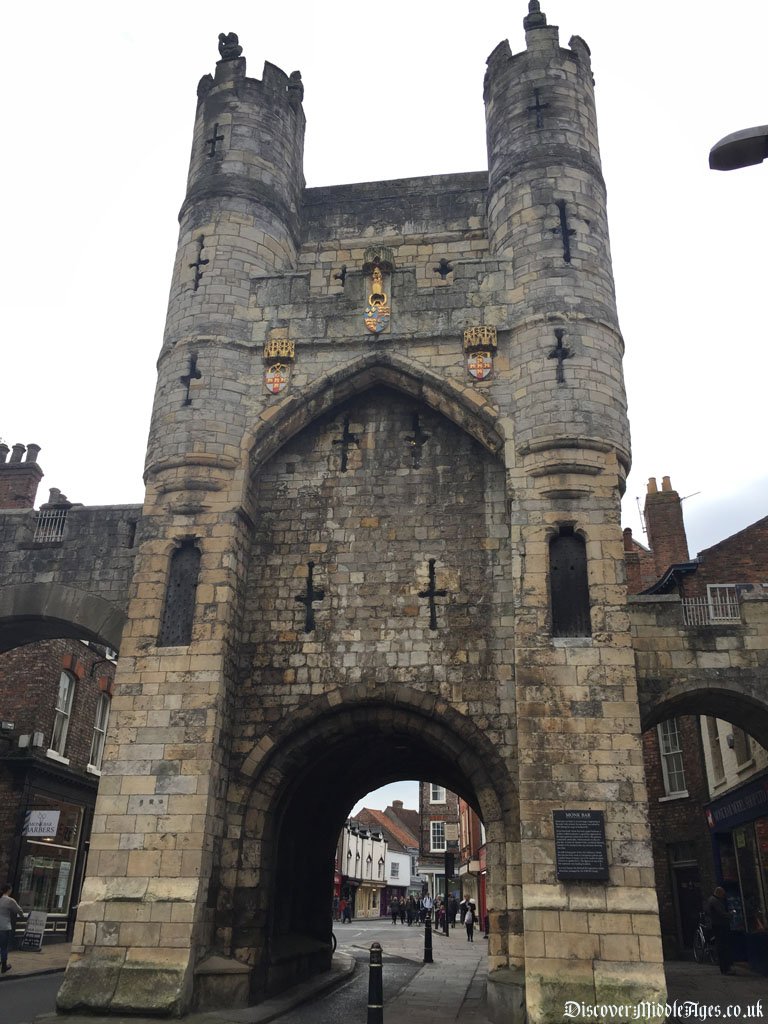
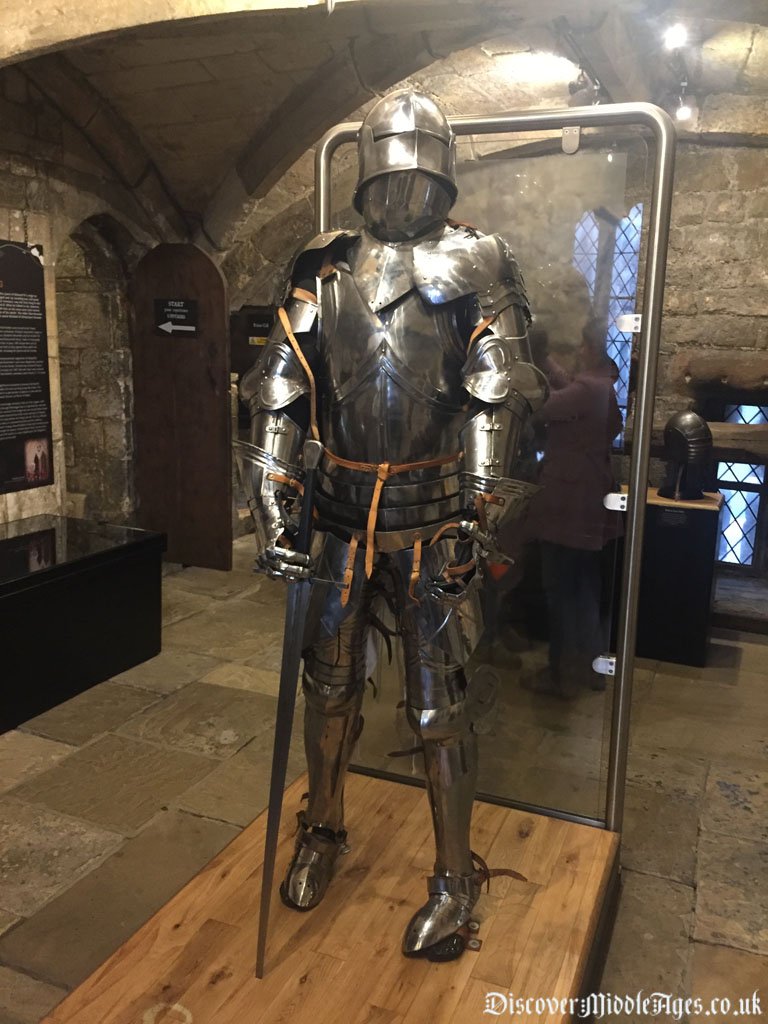
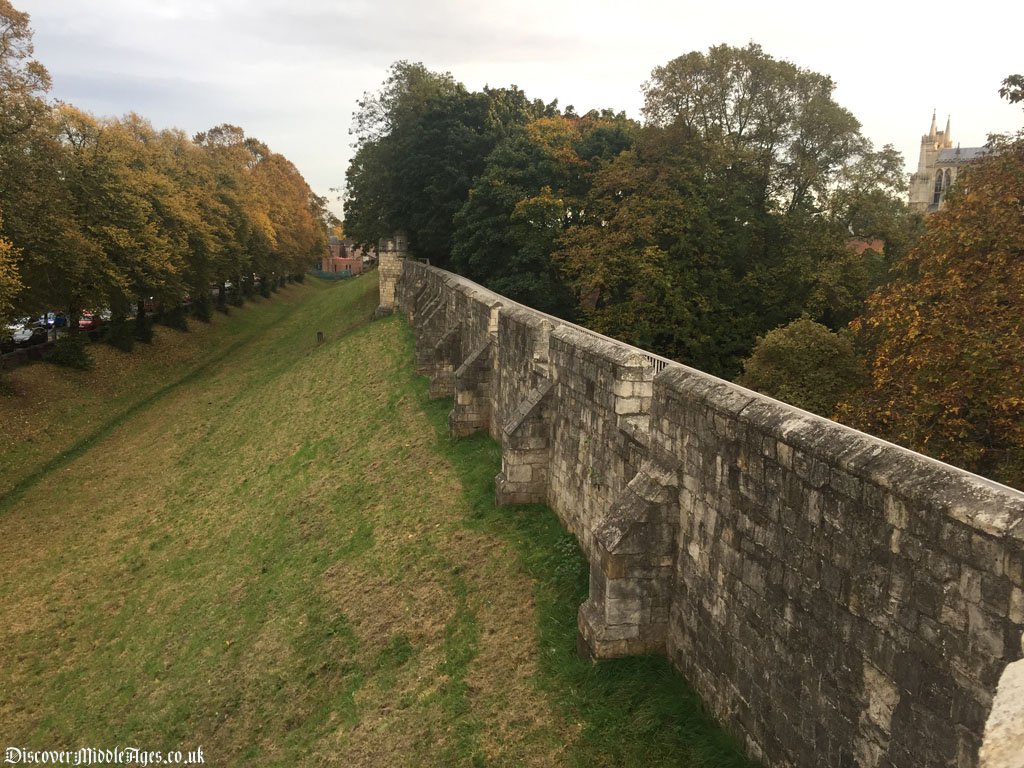
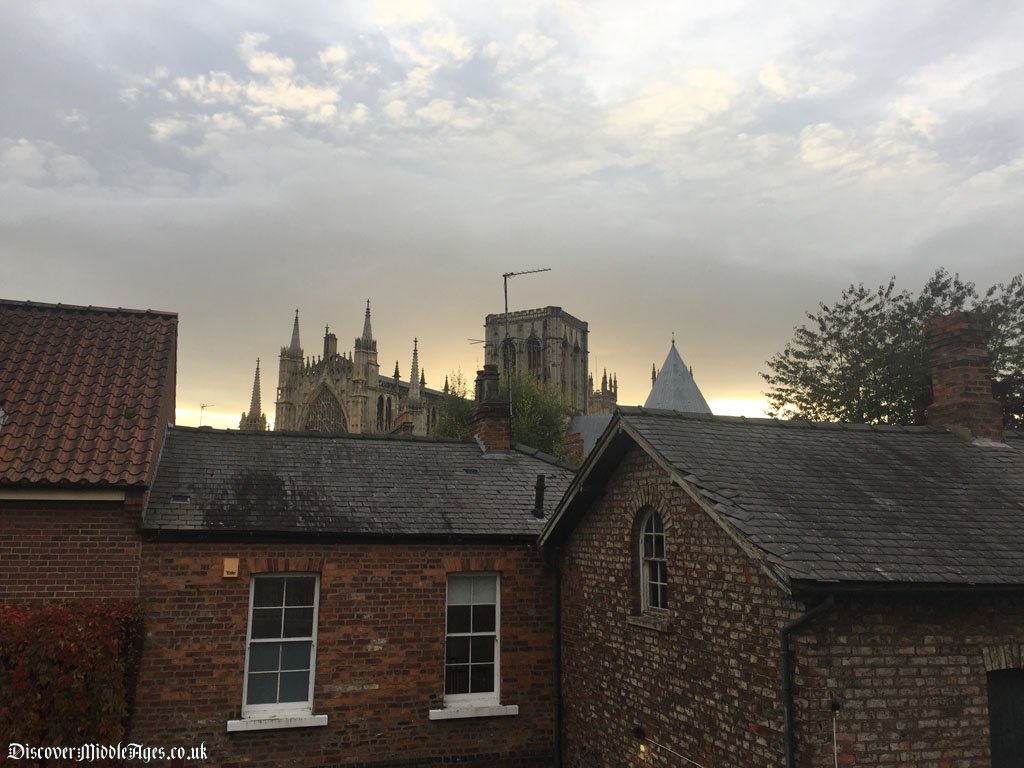
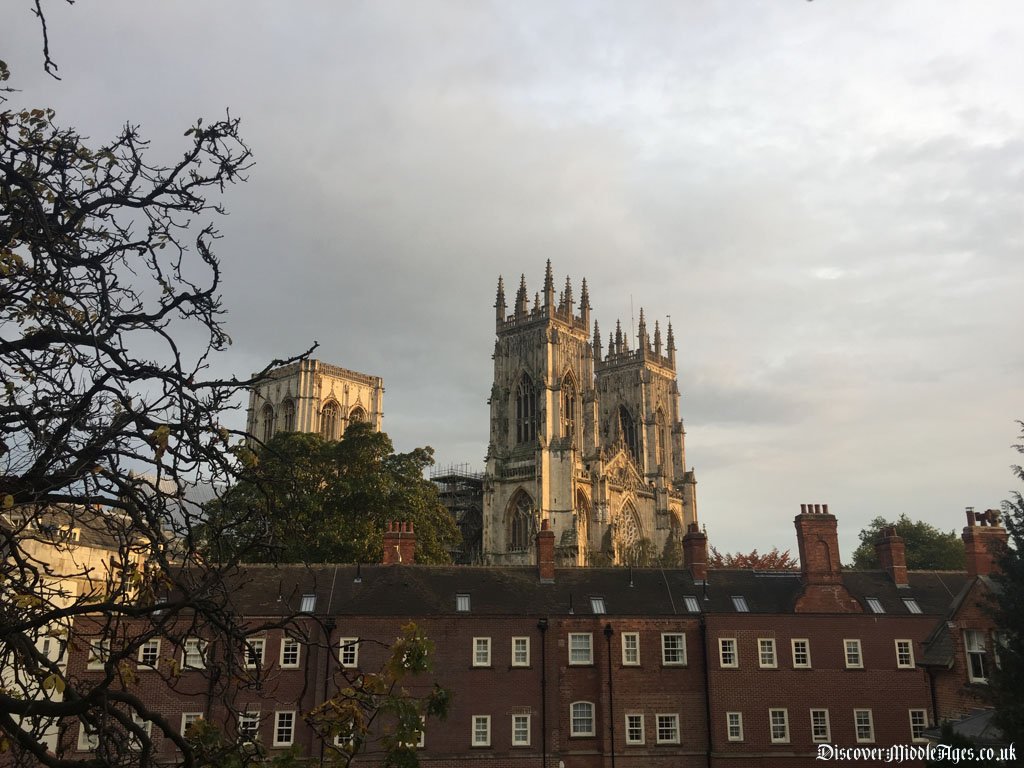
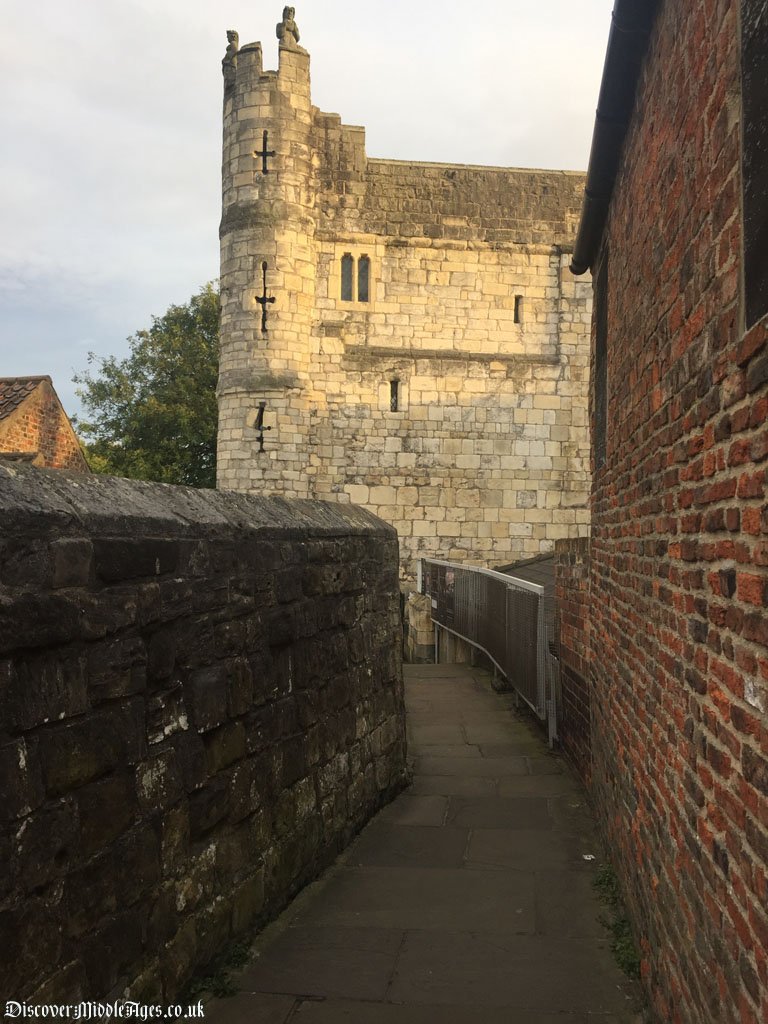
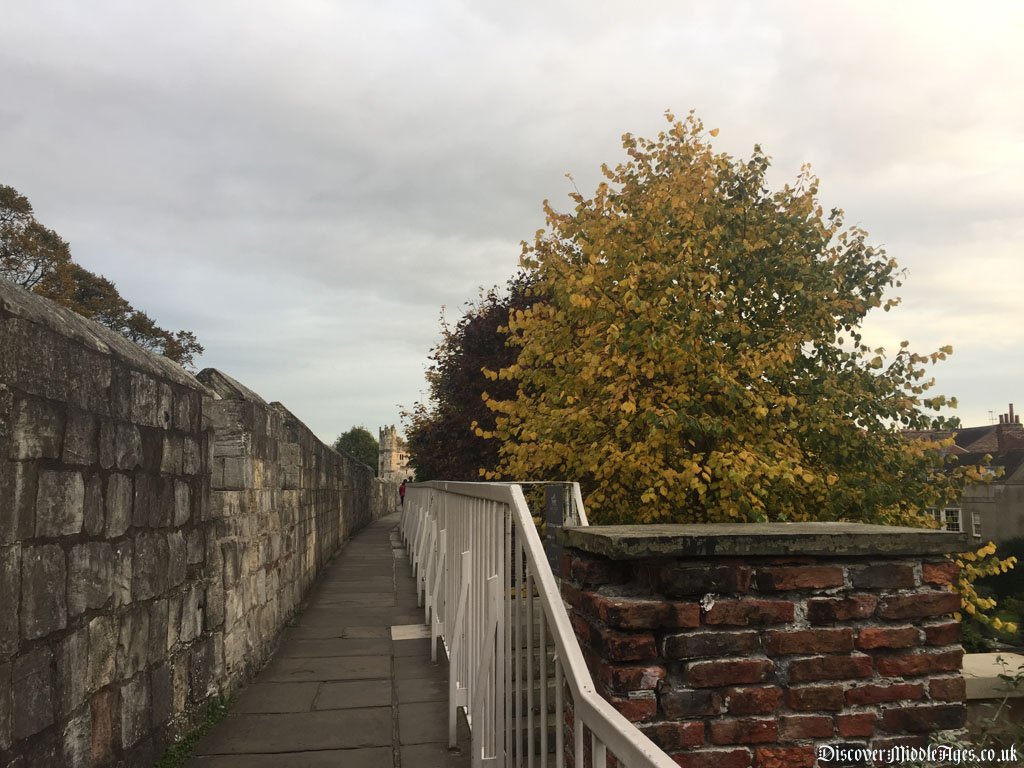

York Castle Prisoners
York Castle has housed guests, royalty and also prisoners. One of the most notorious prisoners, was Dick Turpin. His crimes included theft, burglary and murder. Local magistrates were concerned with how Turpin made his money, and suspicions were confirmed when an intercepted letter revealed his crimes. Turpin was found guilty of horse theft, and executed in April 1739 at Knavesmire, York.
York City Wall Walk
The city of York is surrounded by stone walls, parts of which originate from Roman times. The remaining walls seen today date from the 13th Century, and can be walked along providing excellent views of the city. Along the walls, there are four gatehouses (or bars), Monkgate Bar, Bootham Bar, Walmgate Bar and Micklegate Bar. These gatehouses were used in medieval times to control entry to the city, by the use of tolls.
Visiting York Castle
York Castle is run and managed by English Heritage. For details on opening times, facilities and refreshments please visit: https://www.english-heritage.org.uk/visit/places/cliffords-tower-york/
Address: York Castle, Tower Street, York, North Yorkshire, YO1 9SA
